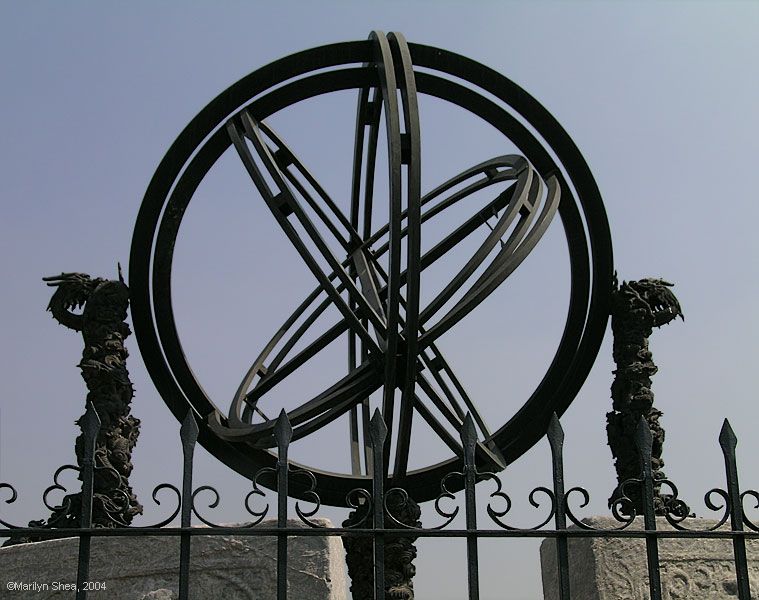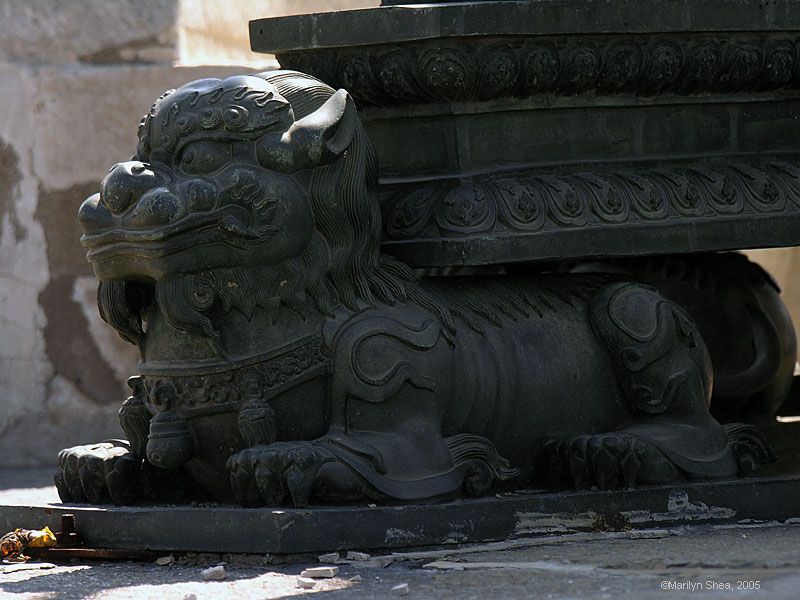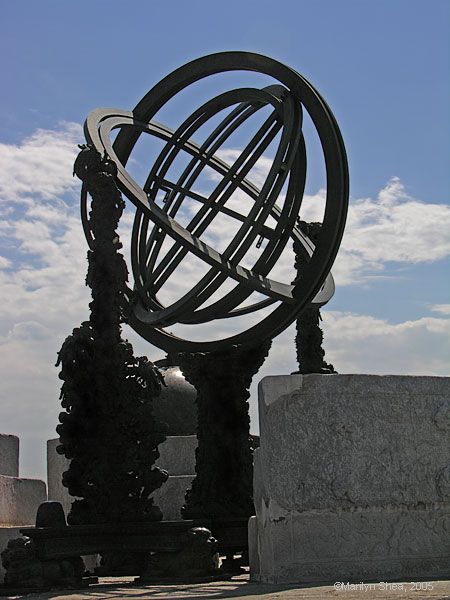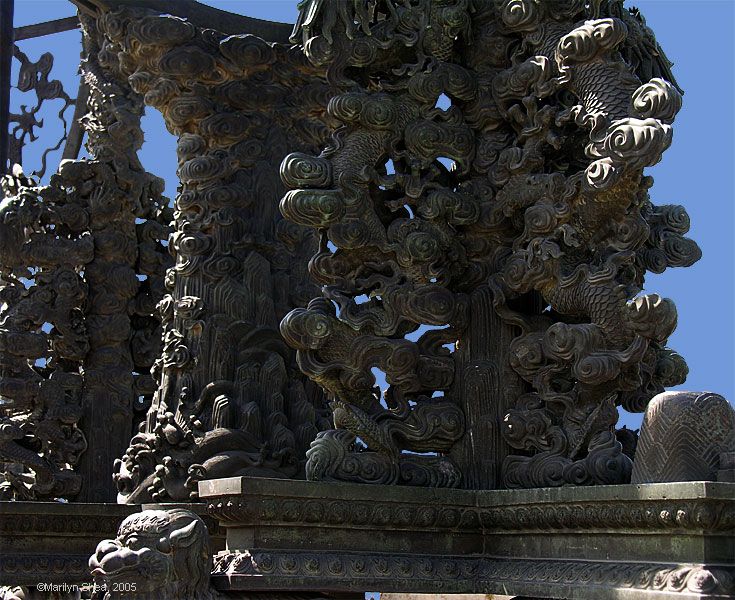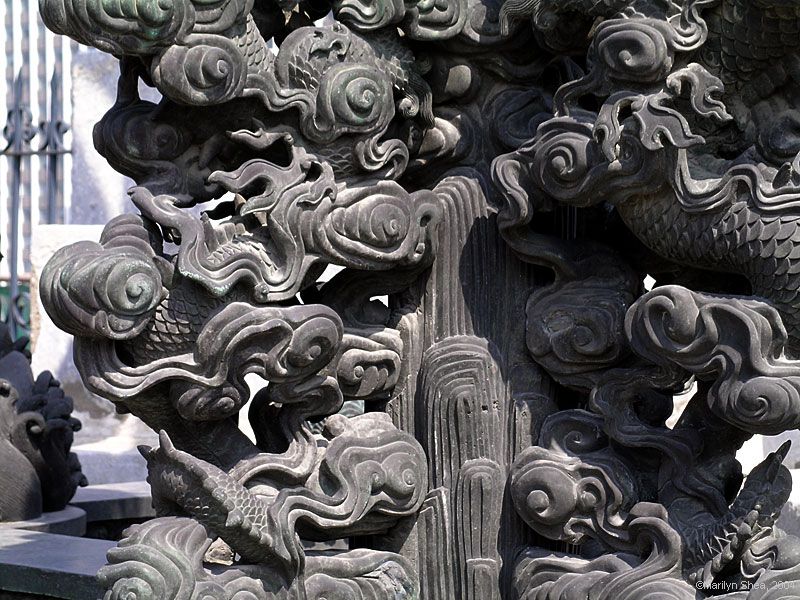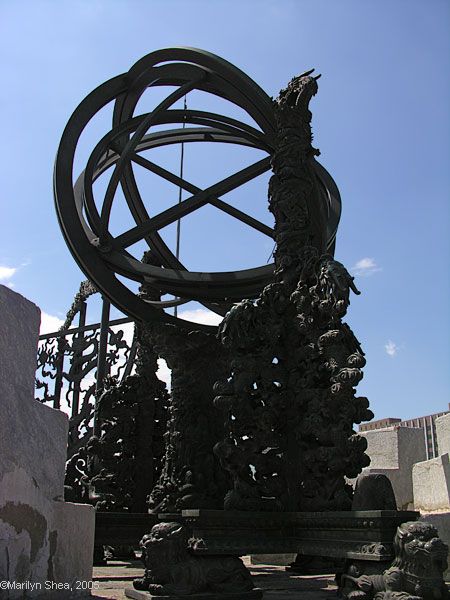| In 1744, Emperor Qian Long ordered that another instrument be built; one that came to be called the New Armilla in English. This armillary sphere 浑仪 (hún yí) or 浑天仪 (húntiān yí) is used to determine true solar time as well as measure the right ascension difference and declination of celestial bodies.
The full name in Chinese is 玑衡抚辰仪 (Jīhéng fǔchén yí). In Chinese the instrument is called Ji1heng2 because it is named after two of the stars in the Big Dipper - 天玑 (Tiānjī) and 玉衡 (Yùhéng) so abbreviated it is called 玑衡 (Jīhéng). 抚辰 (fǔchén) means to measure carefully, and 仪 (yí) is a general word for instrument that is used for most astronomical instruments.
The instrument was designed by Ignatius Koegler (1680-1746) and Augustein de Hallerstein (1703-1774). As instructed by Emperor Qianlong, they designed an instrument that was based on the traditional Chinese equatorial armillary but incorporated the 360° standard measurement. They also added the adjustment screws and the ability to replace worn parts with spares. Like other equatorial armillas it was used to measure true solar time as well as the right ascension difference and declination of celestial bodies.
|
